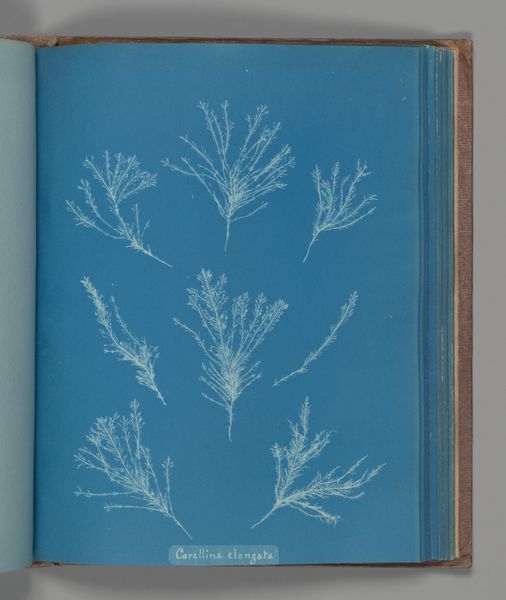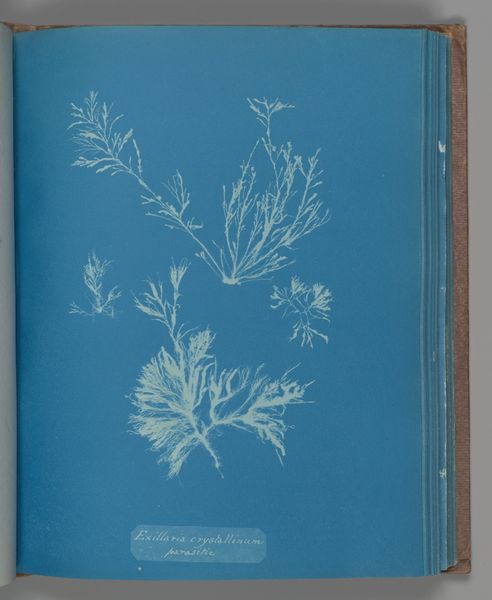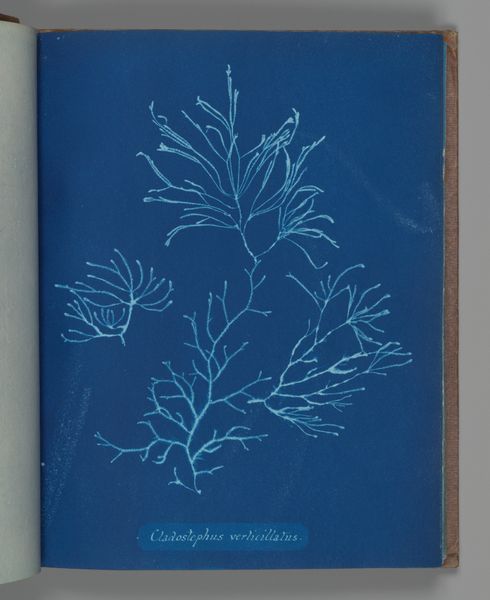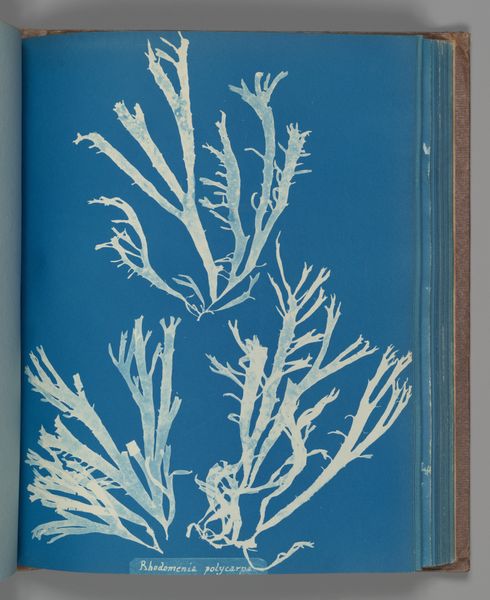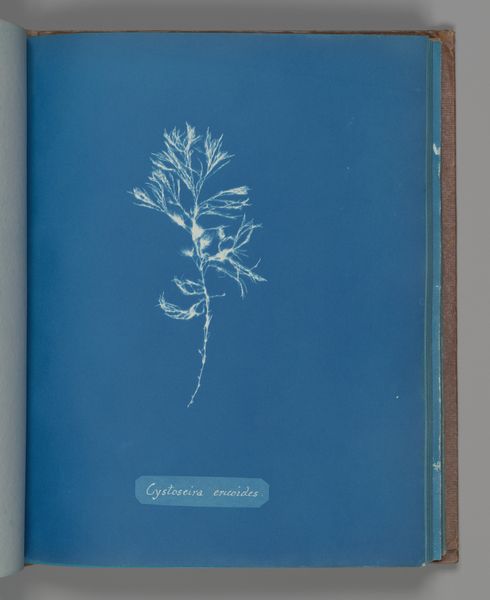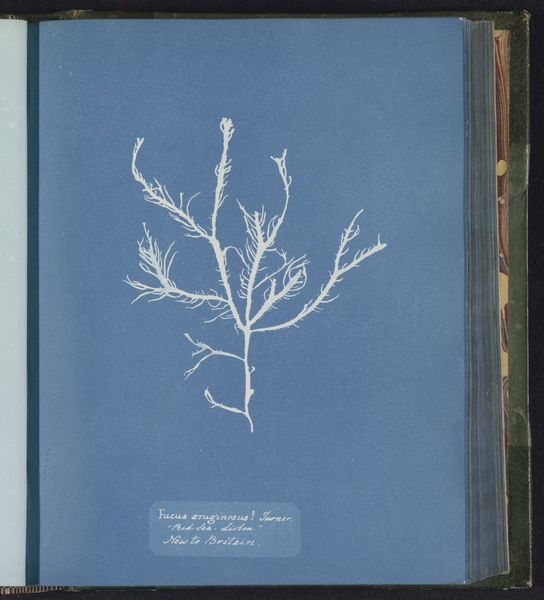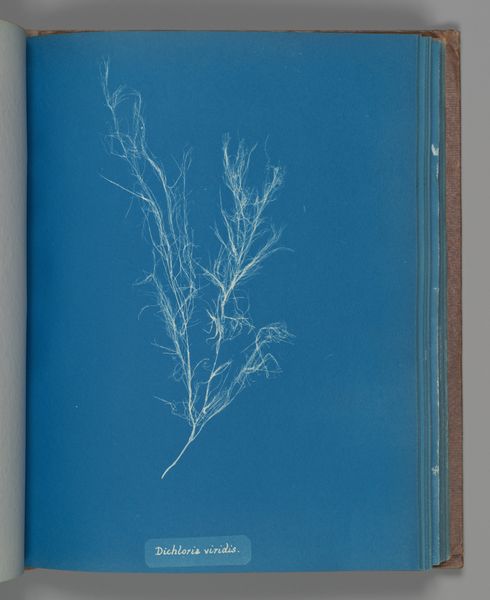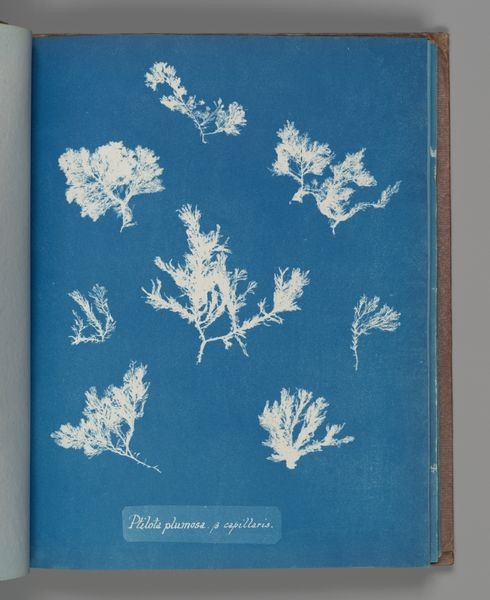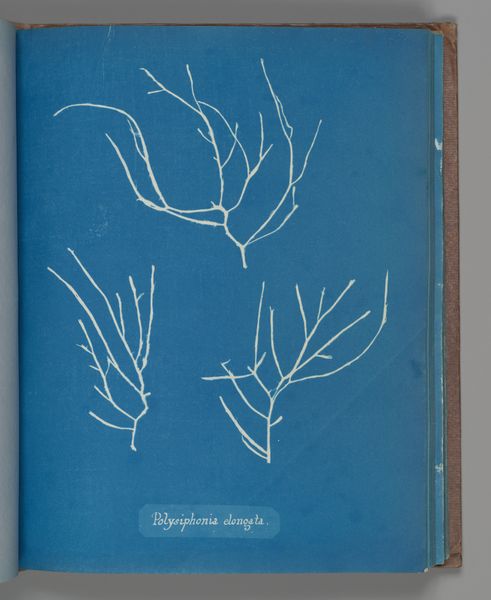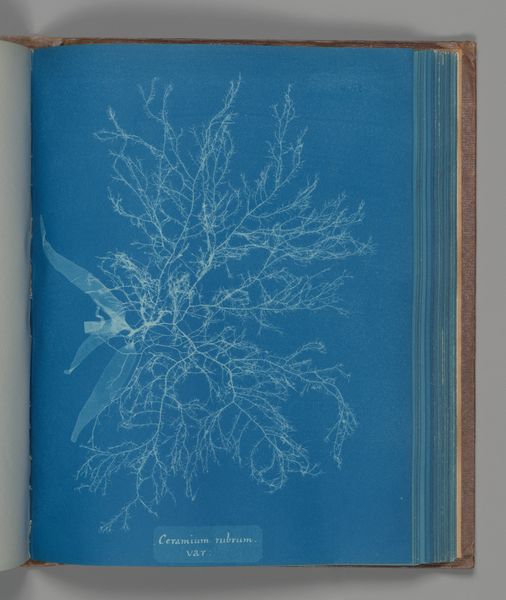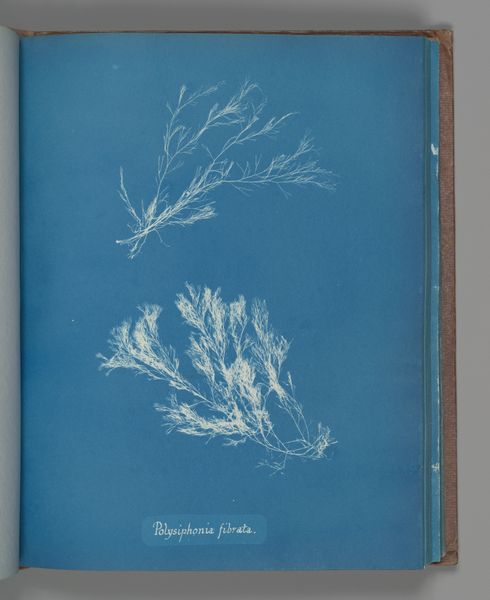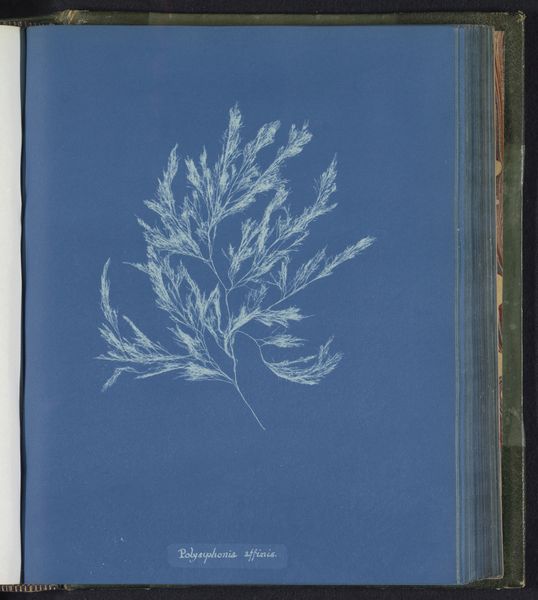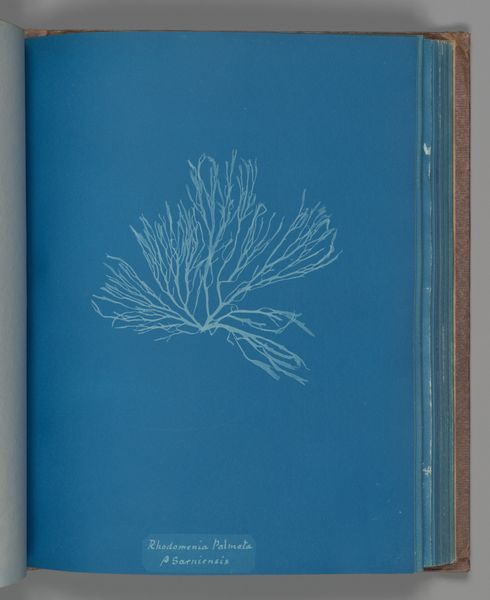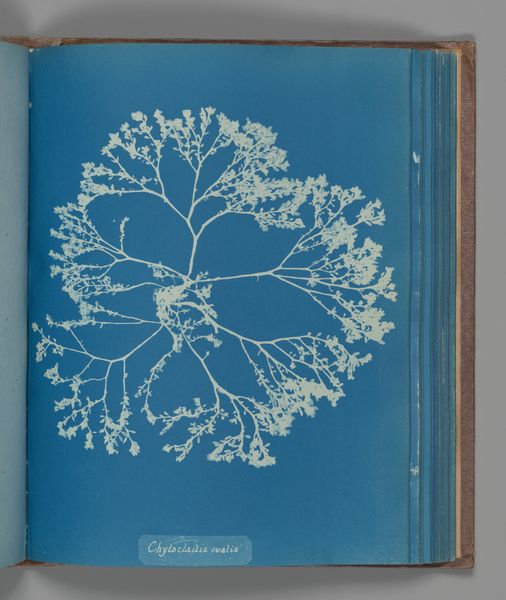
Fucus æruginosus Turner. "Med. Sea Sisbon" New to Britain. 1851 - 1855
0:00
0:00
print, paper, cyanotype, photography
# print
#
paper
#
cyanotype
#
photography
#
plant
#
naturalism
Dimensions: Image: 25.3 x 20 cm (9 15/16 x 7 7/8 in.)
Copyright: Public Domain
Anna Atkins made this photogram in the 1840s, using cyanotype, one of the earliest photographic processes. It pictures Fucus æruginosus Turner, algae discovered by the botanist Dawson Turner. To make it, Atkins coated paper with light-sensitive chemicals, laid the seaweed specimen directly on the surface, and exposed it to sunlight. The ultraviolet light turned the paper Prussian blue, except where the algae blocked the rays. This created a ghostly white silhouette against the vibrant ground. Atkins wasn't just making pretty pictures; she was a botanist creating a scientific catalogue. This print comes from her publication "Photographs of British Algae: Cyanotype Impressions." The cyanotype process allowed Atkins to bypass the laborious work of hand-drawing each specimen. It also democratized the distribution of botanical information. Atkins’s work is important because it merges art, science, and the advent of photography. Her innovative use of the cyanotype process challenges traditional ideas about art making and its relationship to industry, labor, and knowledge sharing.
Comments
No comments
Be the first to comment and join the conversation on the ultimate creative platform.
